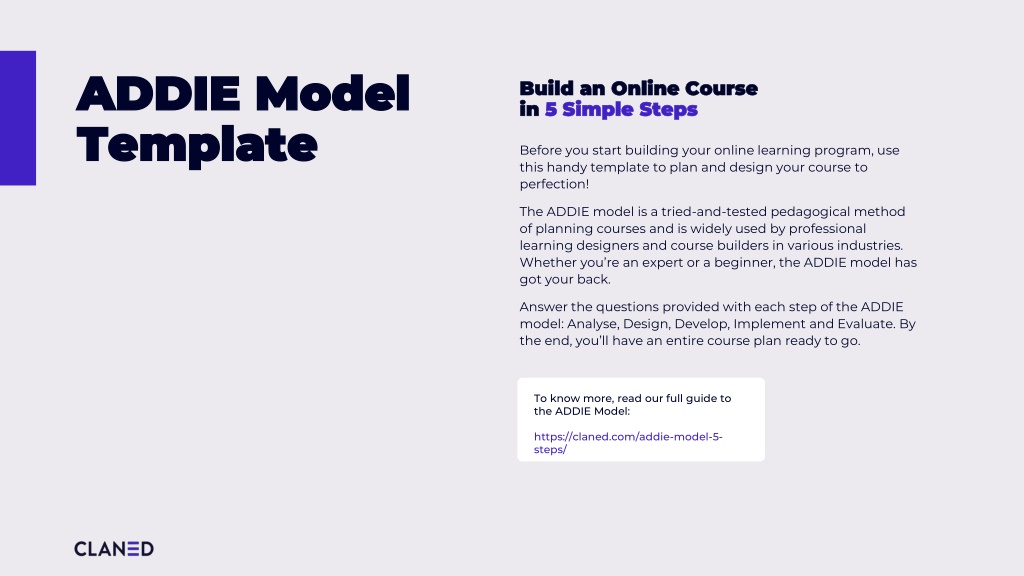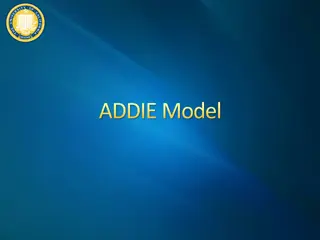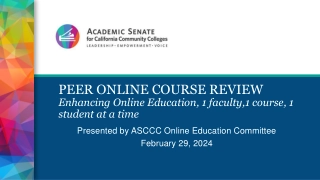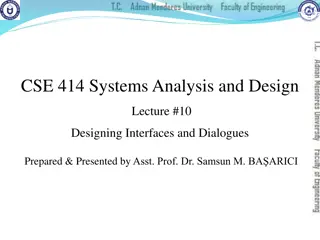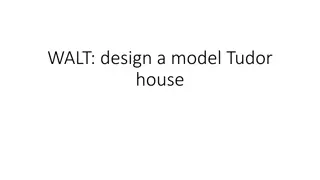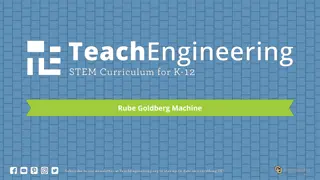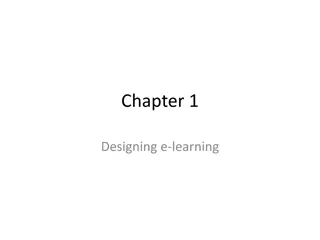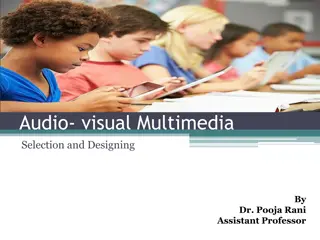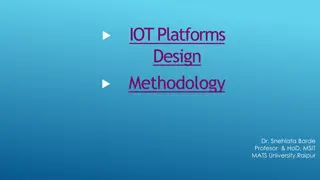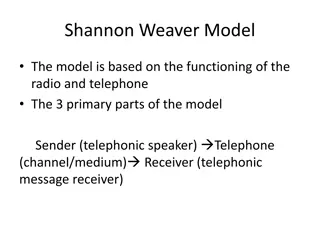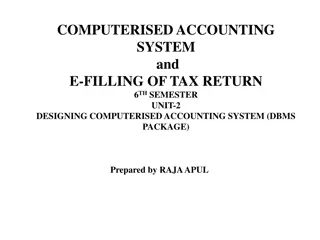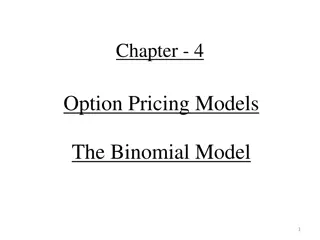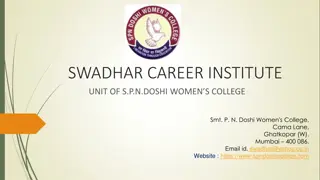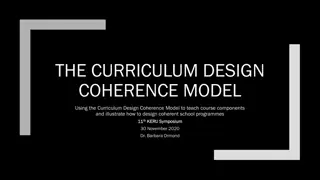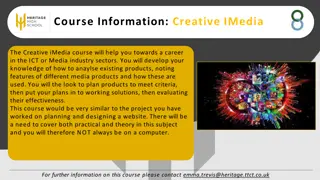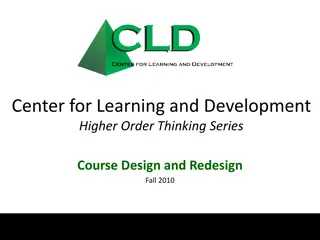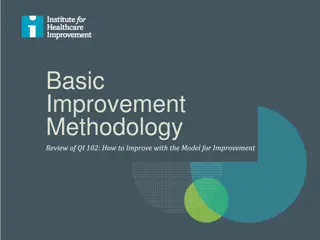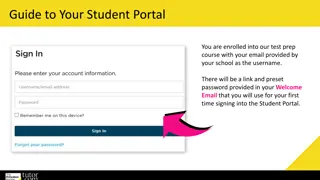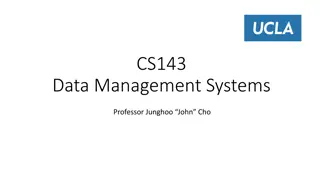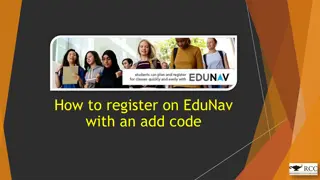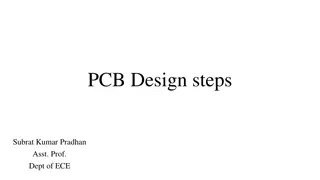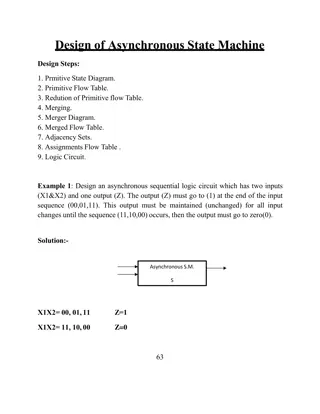Designing an Online Course Using ADDIE Model: 5 Simple Steps
Design your online course effectively using the ADDIE model in 5 simple steps. Analyze the course objectives, identify the target audience, address constraints, and plan content design to create a successful online learning program. Utilize the insights from the Analysis step to make crucial decisions in the Design stage. Follow this tried-and-tested pedagogical method to develop a comprehensive course plan that aligns with organizational goals and learner needs.
Download Presentation

Please find below an Image/Link to download the presentation.
The content on the website is provided AS IS for your information and personal use only. It may not be sold, licensed, or shared on other websites without obtaining consent from the author. Download presentation by click this link. If you encounter any issues during the download, it is possible that the publisher has removed the file from their server.
E N D
Presentation Transcript
ADDIE Model ADDIE Model Template Template Build an Online Course Build an Online Course in in 5 Simple Steps 5 Simple Steps Before you start building your online learning program, use this handy template to plan and design your course to perfection! The ADDIE model is a tried-and-tested pedagogical method of planning courses and is widely used by professional learning designers and course builders in various industries. Whether you re an expert or a beginner, the ADDIE model has got your back. Answer the questions provided with each step of the ADDIE model: Analyse, Design, Develop, Implement and Evaluate. By the end, you ll have an entire course plan ready to go. To know more, read our full guide to the ADDIE Model: g https://claned.com/addie-model-5- steps/
Analyse Analyse During this first stage, prepare to dig into all the why s of your online course. Identify the purpose and goals. Get a sense of how the course aligns with your organisation s needs and where it fits into your overall strategy. Lastly, get familiar with your learners so you know exactly who to design your course for!
What are you looking What are you looking to achieve learning program? learning program? to achieve with the with the Who is your Who is your target learner audience target learner audience and what do you know about them? what do you know about them? and (Organisational goals, learner goals, business outcomes) (Demographic, preferences, needs, skill levels) Write your answer here Write your answer here What should learners What should learners know by the end of the course? by the end of the course? know or or be able to do be able to do What What constraints or challenges constraints or challenges will you be working with? How do you plan to overcome them? with? How do you plan to overcome them? will you be working E.g. We have a team spread across locations and will need to include remote learning options E.g. The sales team should be able to work with the new software program proficiently Write your answer here Write your answer here
Design Design In this stage, you use the insights from the Analysis step to make several crucial decisions about your course. From the resources you ll need to the format in which you ll present your information, the Design stage takes care of all the finer details that go into building your learning program.
What classroom model will you What classroom model will you use for your course? use for your course? What course format would work What course format would work best for your target learner base? best for your target learner base? What would the course timeline What would the course timeline look like? look like? E.g. Blended learning, flipped classroom E.g. Videos and readings, followed by quizzes E.g. Course completion in 2 months with set deadlines Write your answer here Write your answer here Write your answer here What are the success metrics for What are the success metrics for your learners? your learners? What checkpoints will you use to What checkpoints will you use to determine the success of the course? determine the success of the course? E.g. Assessments, applying knowledge E.g. After-course employee performance Write your answer here Write your answer here
Develop Develop You ve got the insights from the Analysis stage. And a plan from the Design stage. Time to get course- building! This is where you select the format, structure and organisation of your content and carefully create a course from the ground up.
What What type of content type of content will best appeal to your will best appeal to your learners? In what learners? In what format format? ? What will you What will you need need in order to in order to create it create it? ? E.g. Expert interviews, team members, video recording studio, editing software etc E.g. Introduce topic through video, offer additional information through readings Write your answer here Write your answer here What would be the best way to What would be the best way to divide, organise and arrange organise and arrange your content? divide, your content? How will your learners How will your learners work through work through the content? the content? E.g. Follow the modules linearly OR pick and choose where they wish to start E.g. 5 modules overall, with 3 videos each module and a quiz after each video Write your answer here Write your answer here
Implement Implement After all that hard work, the course is ready to go! But while anyone can run a course, the true mastery lies in knowing how to get the most out of it. Make sure to cover all your bases, continually support your courses and maximise their full potential.
In what ways can you In what ways can you use the full capabilities use the full capabilities of your platform? of your platform? What What instructions instructions will trainers need to will trainers need to guide learners effectively? learners effectively? guide E.g. How to encourage participation and lead discussions E.g. In-built features, settings, user experience Write your answer here Write your answer here Run a Run a quality check/get outside opinions quality check/get outside opinions on the course. What are your findings? the course. What are your findings? on How did you ensure that the learners get to How did you ensure that the learners get to experience the course as intended? the course as intended? experience E.g. Introduced learners to the platform before starting the course E.g. One of the recommended readings could use better formatting Write your answer here Write your answer here
Evaluate Evaluate This final stage is all about arming yourself with feedback and learnings so that you can gauge the true success of your course and work on improving future versions.
Go back to the Go back to the goals Did you meet them? Did you meet them? goals you set in you set in Analysis stage. Analysis stage. What What learning data learning data or to support your findings? to support your findings? or analytics analytics do you have do you have E.g. Study Time, Topic Interest, Learner Interactions The sales team reports higher proficiency with the newer software Write your answer here Write your answer here What What after support your findings? support your findings? after- -course data course data do you have to do you have to What is the What is the general learner feedback? general learner feedback? E.g. What did they enjoy most? What was too easy or too difficult? E.g. Avg. time spent on a specific task has reduced by 20%) Write your answer here Write your answer here
